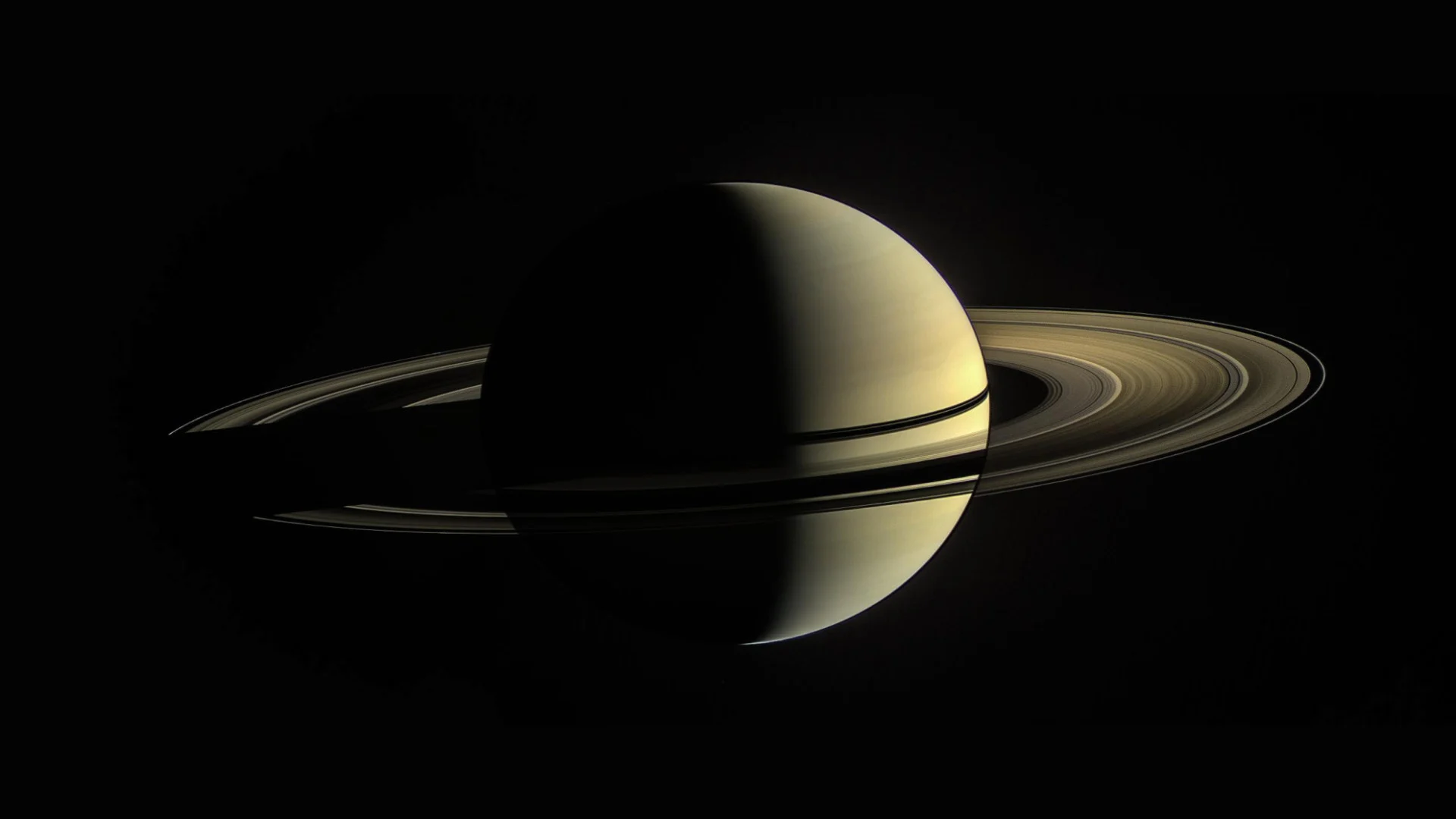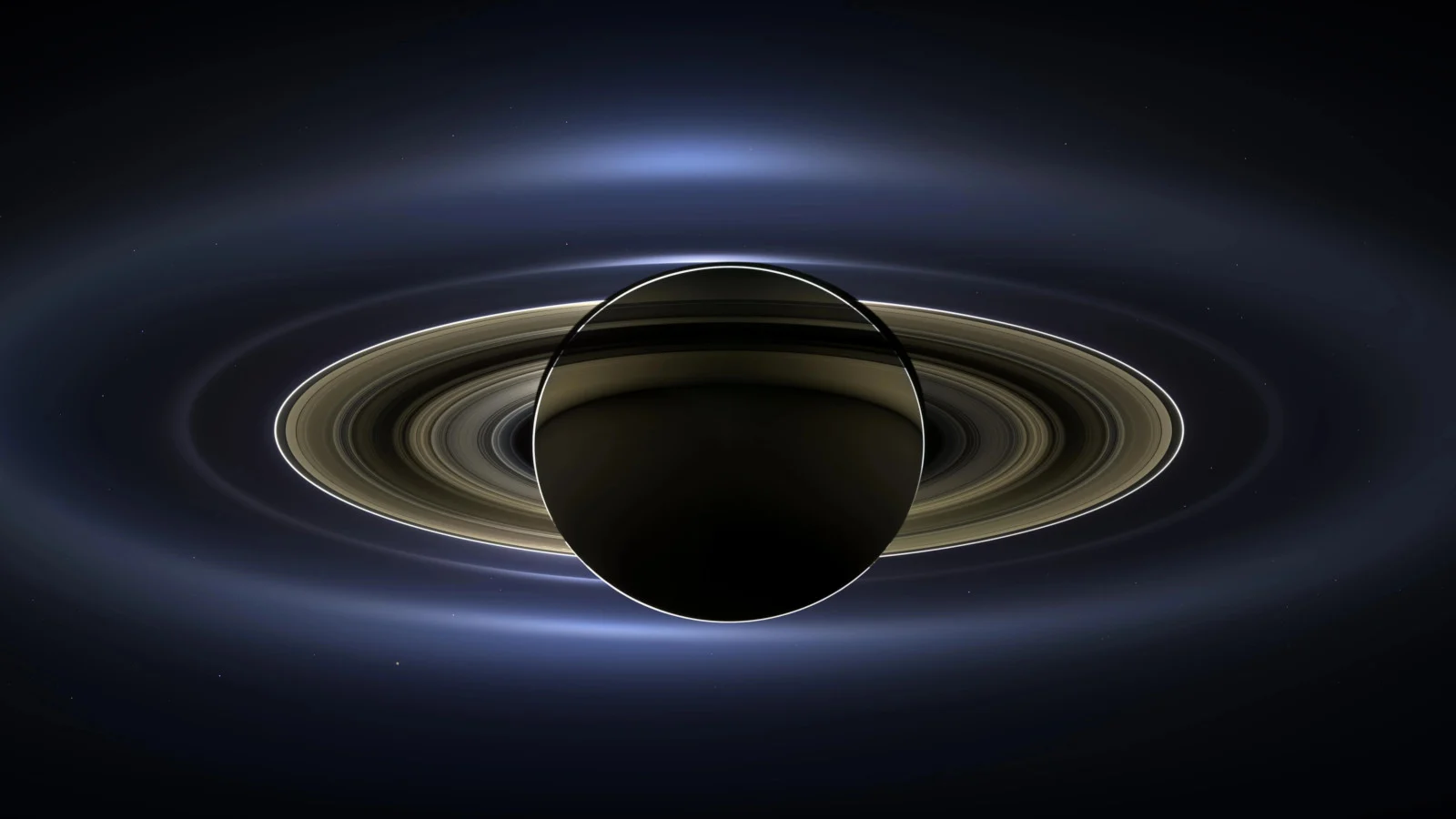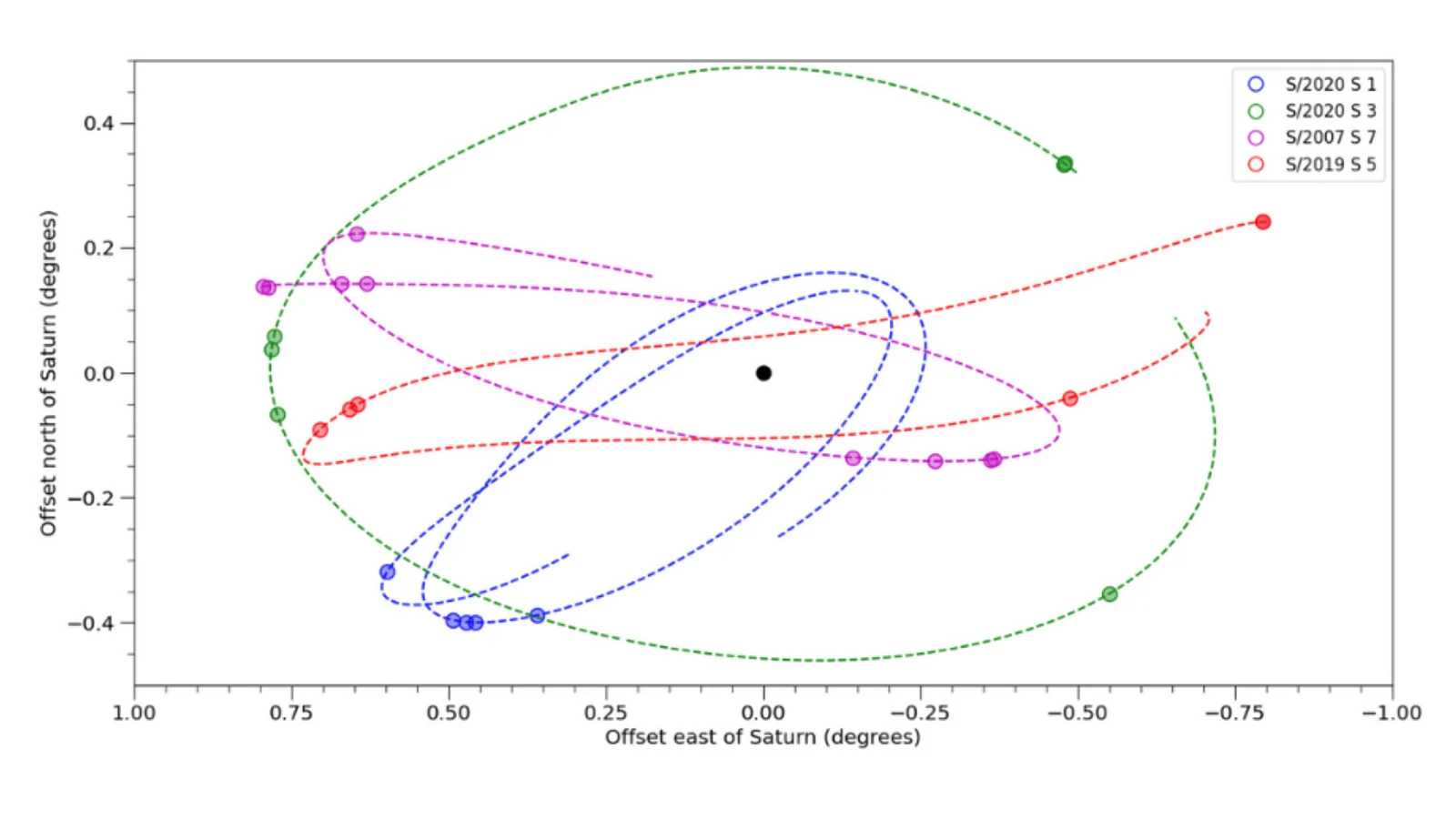
Saturn is the new 'Moon King' of the solar system
In addition to becoming the first planet with over 100 confirmed moons, Saturn now has more known moons than the rest of the solar system combined!
Astronomers just added enough new moons to Saturn's roster that it may have taken back the title of "Moon King" from Jupiter for good.
The two largest, most massive planets in our solar system have been in an astronomical competition for years to determine which one has the most moons. As of February, Jupiter's tally stood at 92, after a dozen newly confirmed or newly discovered moons were added by recent observations. Since then, three more have joined the planet's tally, bringing Jupiter's total to 95 and nudging it closer to becoming the first planet in our solar system to have over 100 confirmed moons.
However, that coveted title has now been claimed by Saturn!

This backlit view of Saturn was captured by the Cassini spacecraft on July 19, 2013, as the probe flew through the planet's shadow. According to NASA, the photo mosaic contains seven of the planet's moons, as well as Mars, Earth and Venus. Credit: NASA/JPL-Caltech
As of May 16, the International Astronomical Union (IAU) has added 62 newly confirmed moons to the ringed planet's total, increasing it from 83 to to 145.
These new Saturn moons were found or confirmed by a team of astronomers from the University of British Columbia, the Harvard Smithsonian Center for Astrophysics, and the Observatoire de Besancon in France, using the Canada-France-Hawaii Telescope, located atop Mauna Kea, in Hawaii. Taking advantage of the telescope's exceptional wide field of view to conduct a survey of Saturn from 2019 to 2021, the team recorded and catalogued the motions of as many tiny moons surrounding the planet as they could.
From their observations, the team traced these moving points of light across multiple images, linking them together in a way that made sense, to construct their orbital paths around Saturn.

The paths of four of the new moons — S/2020 S 1, S/2020 S 3, S/2007 S 7, and S/2019 S 5 — are shown in this diagram. Each coloured dot represents the locations these moons were spotted around Saturn (black dot, centre) during the 2019-2021 observations. The dashed lines indicate their orbit path, as traced by the research team. The 'warped' look to the orbits is a result of the relative motions of Earth and Saturn during the observing campaign. Credit: UBC
"Tracking these moons makes me recall playing the kid's game Dot-to-Dot, because we have to connect the various appearances of these moons in our data with a viable orbit, but with about 100 different games on the same page and you don't know which dot belongs to which puzzle." Ashton, who is now a postdoctoral researcher at Taiwan's Academia Sinica Institute of Astronomy and Astrophysics, said in a UBC press release.
Of these 62 new moons, 30 were newly discovered by Ashton's team during their 2019-2021 observations. The rest were first logged as 'candidate' moons after being spotted during previous surveys between 2004 and 2007, led by Scott Sheppard of the Carnegie Institution for Science. At that time, there wasn't enough evidence to be sure they were real, but the new survey gathered enough sightings to confirm their existence.
According to UBC, these moons were all found using a technique called 'shift and stack', where each sequential image from the telescope is shifted slightly to match the pace that a moon would be moving across the field of view. These shifted images were then 'stacked' to combine the light that they captured. This method enhances the brightness of these tiny moons where they overlap, thus allowing the astronomers to pick out smaller, dimmer moons from the data.
"By shifting and stacking many sequential images taken during three hour spans, they were able to detect moons orbiting Saturn down to about 2.5 kilometres in diameter," the UBC press release said.
READ MORE: Jupiter takes the lead on Saturn with 92 confirmed moons
The new 'irregulars'
All of these new additions are what astronomers call irregular moons — small moons orbiting Saturn far from the planet and its rings, on highly inclined and highly elliptical paths.
Irregular moons around Saturn come in three main varieties, based on the tilt of their orbit and the direction they orbit around the planet. The Gallic and Inuit 'prograde' groups orbit the planet in the same direction it rotates. Meanwhile, the much larger Norse group all have retrograde motion, meaning that they travel opposite to Saturn's rotation, and their orbits are tilted opposite to the other two groups.

This diagram shows the orbits of the moons of Saturn, with each group having a different colour, and separated into prograde and retrograde paths. The small inset (bottom left) shows the tilt of the orbits. Credit: Scott Sheppard/Carnegie Science/Scott Sutherland
Each of these newly confirmed moons may one day have a more unique name based on the names of giants from the specific mythology of their group (Inuit, Gallic, or Norse). For now, though, they all have 'provisional' names consisting of a letter-number combination — starting with 'S/' for satellite, followed by the year they were first spotted, the first letter of the name of the planet they orbit, and a number representing the order in which they were found in their discovery year. Thus, 'S/2007 S 7' is the 7th moon of Saturn discovered in 2007, while 'S/2020 S 3' is the third Saturnian moon found in 2020.
Also, even if a moon was found more recently if it can be traced back to previous observations, its name reflects the year and order of those first sightings. For example, the Norse irregular 'S/2004 S 53' was just added to Saturn's tally by Ashton's team. However, since it was traced back to previous observations, its name records that it is the 53rd Saturn moon discovered in 2004.
DON'T MISS: Wow. Weird 'rock comet' 3200 Phaethon is way stranger than we thought!
The new 'Moon King'
NASA JPL's Solar System Dynamics team currently recognizes 268 "traditional" moons in the solar system — 1 for Earth, 2 for Mars, 95 for Jupiter, 124 for Saturn, 27 for Uranus, 14 for Neptune, and 5 for Pluto. However, this tally accounts for only 41 of the 62 new moons around Saturn. Once their count reflects all of the confirmed Saturnian moons added by the IAU, that number will jump to 289. Saturn will become the undisputed king of moons for the solar system.
With a new total of 145 moons, the ringed planet is the first to accumulate more than 100, and it now has the highest number of confirmed moons of any planet in the solar system. Additionally, it also has more moons than all the other planets combined!

This simulation from NASA's Eyes on the Solar System shows the swarm of tiny moons that orbit around Saturn. The inset (bottom right) has a closeup view of Saturn, its rings, and its inner regular moons: Mimas, Enceladus, Tethys, Dione, Rhea, Titan, and Iapetus. Credit: NASA/Scott Sutherland
Saturn's full collection of confirmed moons now includes:
9 small moons within the planet's ring system, ranging from 300 metre-wide "S/2009 S 1" up to 180 km-wide Janus,
15 regular moons outside the rings, from 1.8 km-wide Anthe up to 5,149 km-wide Titan, and
121 irregular moons, with the smallest (S/2004 S 39) around 2 km wide and the largest (Siarnaq) roughly 40 km wide.
According to Ashton, along with the 62 newly confirmed moons, their survey turned up roughly 50 more candidate moons that could be confirmed at a later date.
The vast majority of irregular moons in the Saturn system (96 so far, to be exact) are tiny, between 2 and 6 kilometres wide, and belong to the Norse group. It is believed that this immense swarm of small moons, all with retrograde orbits around the planet, resulted from a larger moon — in the 10s of kilometres wide, according to Ashton — broke apart sometime recently (at least in astronomical terms).
"As one pushes to the limit of modern telescopes, we are finding increasing evidence that a moderate-sized moon orbiting backwards around Saturn was blown apart something like 100 million years ago," Brett Gladman, a member of the discovery team from the University of British Columbia, said in the UBC press release.











